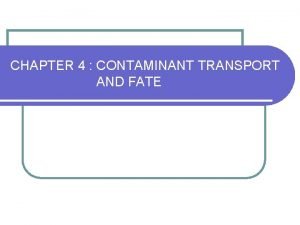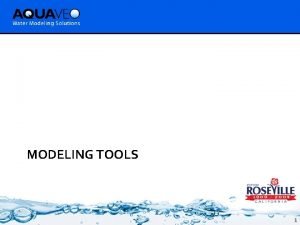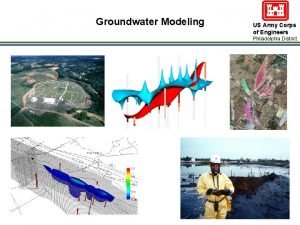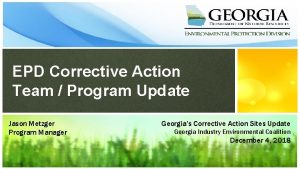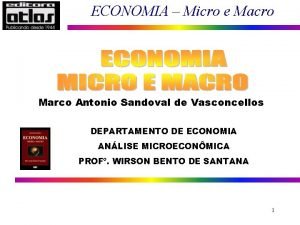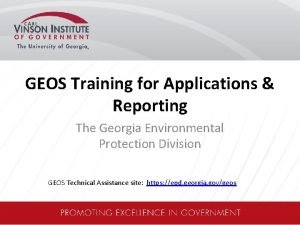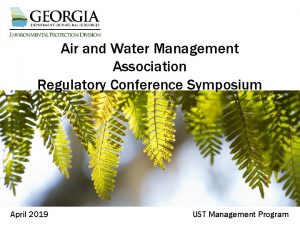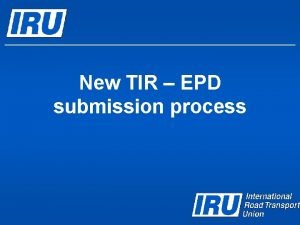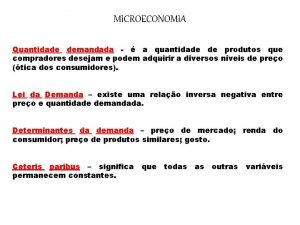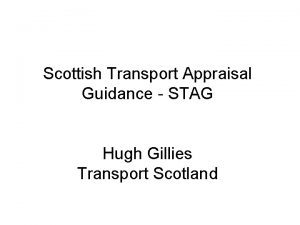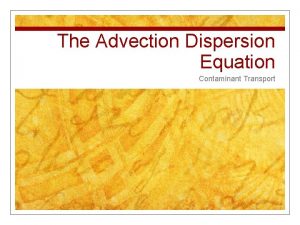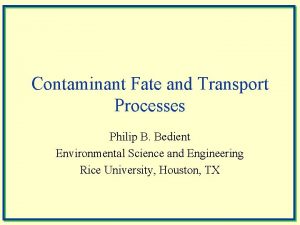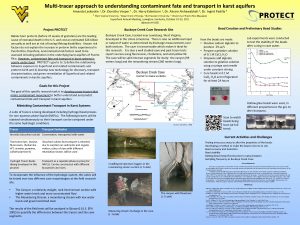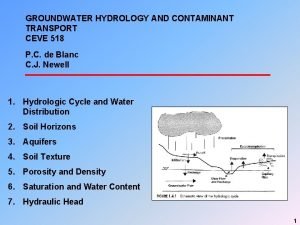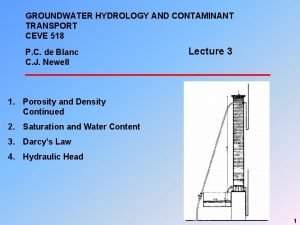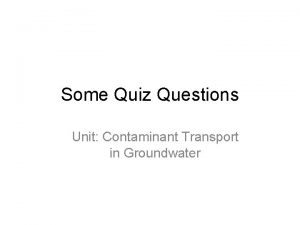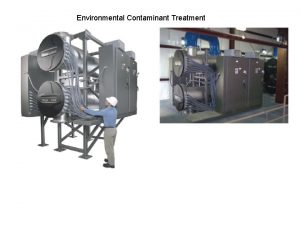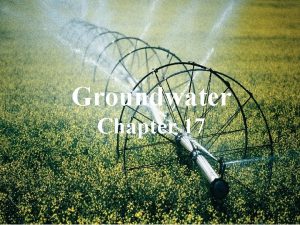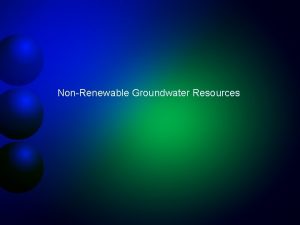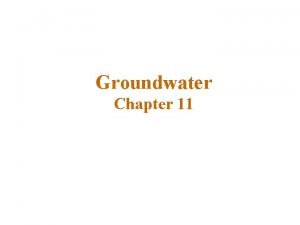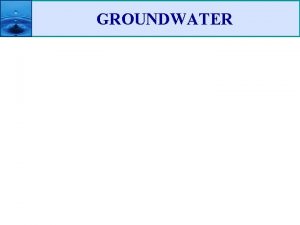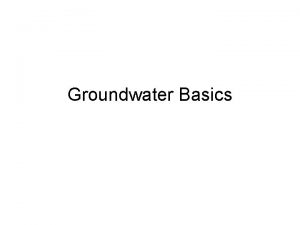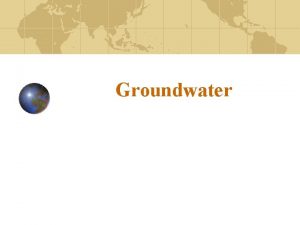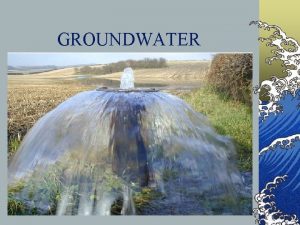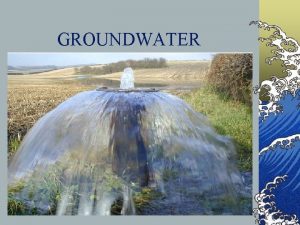Groundwater Contaminant Fate Transport Modeling EPD Guidance Land



















- Slides: 19

Groundwater Contaminant Fate & Transport Modeling EPD Guidance Land Protection Branch Robin Futch, P. G. Carolyn Daniels, P. G. Allan Nix Geologist/Compliance Officer, RRP/LPB/EPD GEORGIA VRP WORKSHOP V October 18, 2016

GROUNDWATER MODELING GUIDANCE General guidelines for the application of groundwater contaminant fate and transport models recently finalized. Document is for guidance only for use at sites with groundwater contamination that are subject to regulation by the Georgia Environmental Protection Division (EPD) under the following statutes: • Federal Resource Conservation and Recovery Act (RCRA) • Federal Comprehensive Environmental Response, Compensation, and Liability Act (CERCLA) • Georgia Hazardous Waste Management Act, O. C. G. A. 12 -8 -60 • Georgia Hazardous Site Response Act (HSRA), O. C. G. A. 12 -8 -90 • Georgia Voluntary Remediation Program Act (VRPA), O. C. G. A. 12 -8 -100 • Georgia Brownfield Act, O. C. G. A. 12 -8 -200 • Georgia Underground Storage Tank Act, O. C. G. A. 12 -13 -1 • Georgia Solid Waste Management Act. , O. C. G. A. 12 -8 -20

GROUNDWATER MODELING GUIDANCE • The guidance is not a substitute for professional judgment, which must be applied in the selection and application of fate and transport modeling, nor does it advocate modeling over the collection and interpretation of quality media-specific site data. • All corrective action methods may be considered under the Voluntary Remediation Program. Compliance with sitespecific cleanup standards may be determined on the basis of accepted fate and transport models per the Voluntary Remediation Program standards and policies outlined in OCGA 12 -8 -108. • The Guidance will be posted on the EPD website by end of October - the link will be sent to all attendees when it is posted.

GROUNDWATER MODELING – GENERAL OBSERVATIONS The quality of the output is directly related to the quality of the input. The preliminary conceptual site model, submitted with VRP application, should be continually updated as the investigation and remediation progresses. Key questions to ask when fate and transport modeling identified as part of a site remedy: 1. Will groundwater contaminants reach sensitive receptors at unacceptably high concentrations? If YES, when in the future will it impact receptors – that data should define performance monitoring period.

DOES THE EPD HAVE A LIST OF APPROVED GROUNDWATER MODELS? Not really. EPD does however offer these guidelines: • Preference is for readily available, widely distributed, and generally accepted models • Prefer public domain models over proprietary -- most were developed by or for government agencies such as EPD, USGS, and USDo. D. Consequently they have been subjected to peer review and have case histories outlining their limitations and drawbacks. • EPD may consider models developed using other software, if documentation is provided demonstrating the software has been verified, peer-reviewed and well documented • EPD Compliance Officer and/or Geologist should be provided with enough data to run the model, to confirm it can be replicated.

COMMONLY USED FATE AND TRANSPORT MODELS FOR GROUNDWATER Analytical models typically assume uniform hydrogeologic and environmental conditions throughout the site. Largely appropriate for less complicated sites. Examples: Bioscreen, Rem. CHLOR (Remediation Evaluation Model for Chlorinated Solvents), and Biochlor Numerical models generally allow for variation of hydrogeological and environmental conditions throughout the site. Generally more applicable to sites where the field data show that groundwater flow or contaminant fate and transport processes are relatively complex. Examples: MODFLOW with Contaminant Transport Model such as MT 3 D or RT 3 D

CONSIDERATIONS WHEN CHOOSING A MODEL 1. Know what the proposed models assumptions and limitations are. 2. Is the data set robust enough, i. e. , sufficient monitoring points and sampling event data, to construct a representative fate and transport model? 3. Models typically make assumptions about hydrogeologic and environmental conditions throughout the site. Is your CSM simple or complex? Pick the model that works best with your site. 4. The CSM used for development of a model should adequately represent the physical and chemical aspects of the hydrological and geochemical processes to be modeled. It should reflect new data and interpretations as they are developed.

CONSIDERATIONS WHEN CHOOSING A MODEL 5. Don’t skimp on collecting site-specific data to get the best representation of site conditions: - Slug tests – tend to underestimate permeability. Surge wells prior to conducting slug tests to get best permeability. Do more tests rather than less. - If dealing with organics, collect samples to estimate foc (fractional organic carbon) 6. Accurate source characterization is essential. Models are generally sensitive to width, depth, and strength of the source area. 7. More than one round of sampling data and data from more than one well is required to develop a representative model.

CONSTRUCTION OF THE MODEL The design of the groundwater model should adequately represent both the data available and the CSM, and should meet the modeling objectives. The model design should include, but not be limited to: • Model layering • Aquifer and Confining Unit Properties • Boundary Conditions • Aquifer Recharge and Discharge • Chemical Properties and Transport Processes • Baseline Stresses • Steady State or Transient Simulations

CONSTRUCTION OF THE MODEL • Inputs should be based on field data and, in some cases, appropriate peer-reviewed literature values - The values of all inputs for each model, node, or cell should be specified in tabular and graphical or map format, as appropriate. The source of the values should be specified as shown in the table below (Source: BIOCHLOR Users Manual, 2000). • If a literature value is used, please provide the bibliographic reference, If field acquired data is used, please provide a reference to the submittal it was reported in. Provision of the ranges of values published in the literature reference or acquired through field data is also very helpful in reviewing the model.

MODEL CALIBRATION Calibration should proceed by first changing those parameters with lowest level of accuracy and then fine tuning the simulation by adjusting other parameters. Typically model calibration is conducted using a timeframe beginning with the known or assumed release date and ending with the date of collection for a field collected data set selected by the modeler. The model is then validated using one or more additional data sets which may have been collected before or after the set used to initially calibrate the model. The calibrated/validated model is then used to predict what happens when an existing condition is allowed to persist into the future (for our purposes, until the worst-case conditions occur) or to show a response to a change in conditions.

MODEL CALIBRATION Contaminant fate & transport models are typically most sensitive to a variety of inputs Field Measured: Source character width, strength, depth and thickness; Permeability (controls groundwater flow rate); and Kd (controls contaminant retardation), foc and p. H dependency

SENSITIVITY ANALYSIS Sensitivity analysis should be performed to determine the relative impact of changes in model input parameters on the model output. Some input parameters are more important in determining model outcomes than others Their relative importance can be influenced by site-specific conditions and the properties of the contaminants being modeled. The relative sensitivity of model results to each tested model input parameter and boundary condition should be documented. (Source: BIOCHLOR Users Manual, 2000).

BIOCHLOR • BIOCHLOR -- an analytical model intended for use as a screeninglevel model to determine if remediation by natural attenuation is feasible at a chlorinated solvent site; model can predict migration patterns of a parent chlorinated solvent species (either TCA or PCE) and its daughter products. • BIOCHLOR has two inherent limitations: (1) it averages the retardation effects and (2) it can only model a single sequential reaction chain. • Assumes simple groundwater flow conditions; should not be used where vertical flow gradients affect contaminant transport. • Assumes uniform hydrogeologic and environmental conditions • In biotransformation mode – designed for simulating sequential reductive dechlorination of chlorinated ethanes and ethenes. BIOCHLOR – most common model submitted to EPD for VRP corrective actions •

GROUNDWATER MODELS – RELEVANT SITESPECIFIC DATA TO COLLECT When a fate and transport model is likely to be part of the final remedy for a site, additional inexpensive data relevant to the development of the groundwater model should be collected: • Grain-size Analysis with Hydrometer Method – to estimate ne & matrix bulk from literature (fines must be reported as silt and clay fractions for this) • Fractional Organic Carbon (foc) – o Walkley Black Method -Results are usually reported as % organic carbon content. The reported value can be converted to a fraction by dividing by 100. o Fractional organic matter content (ASTM Method 2974) - Divide reported result by 1. 724 to estimate foc. • Slug tests

GROUNDWATER MODELING DELIVERABLES ü Input and output sheets for the following model runs: Calibration Simulation; (2) Validation Comparison Simulation; (3) Maximum Plume Extent Predictive Simulation; and (4) Applicable Groundwater Cleanup Standards. ü A contaminant plume map and cross-sections that show the source dimensions used in the model: length, width, and source thickness. ü A table summarizing predicted contaminant concentrations vs field-measured concentrations along the plume centerline:

GROUNDWATER MODELING DELIVERABLES ü Model Calibration and Validation: The model should be both calibrated and validated for EPD to be able to replicate and concur with any conclusions based on it. ü Modeled Maximum Projected Extent of the Contaminant Plume: The simulation time for a properly calibrated and validated model should be extended until the contaminants begin to retreat or reach asymptotic levels. Output sheets representing the predicted year(s) that the contaminant plume(s) ceases to migrate downgradient, and the plume conditions on the animation dates immediately before and after the output sheet referenced above showing the plume migrating forward before and retreating or stabilized afterward.

COMMON DEFICIENCIES WITH GROUNDWATER MODELING DELIVERABLES ü Lack of documentation – no sources/justification provided for input ü ü ü ü values used in model. This information should be provided in tabular format in addition to a narrative. Input values, when provided, are often not used in the model runs or incorrectly entered. Representative start date for release – many models do not reflect when impacts began, i. e. , when business began operation or source removed. If the source has been removed, there may be other options. Models with only 1 well have been submitted. At a minimum there should be 2 wells and if only 2 wells, justification needs to be provided. 3 wells (or more) are preferred. Wells in the centerline of the plume (POD) should be used for calibration and as POD wells during performance monitoring. For each model run, the corresponding screen shots are not provided as paper copies for all VOCs. Sensitivity analysis is not conducted and no discussion provided. Conclusions relative to modeling objectives not provided.

Questions? ?
 Contaminant transport equation
Contaminant transport equation Gms groundwater modeling
Gms groundwater modeling Groundwater modeling
Groundwater modeling Corrective action team
Corrective action team Produtividade média
Produtividade média Ga geos
Ga geos Geos epd
Geos epd Tirepd.iru
Tirepd.iru Microeconomia
Microeconomia Helen c erickson
Helen c erickson Relational vs dimensional data modeling
Relational vs dimensional data modeling What is direct guidance
What is direct guidance Condylar guidance and incisal guidance
Condylar guidance and incisal guidance Hugh gillies transport scotland
Hugh gillies transport scotland Unlike passive transport active transport requires
Unlike passive transport active transport requires Bioflix activity membrane transport active transport
Bioflix activity membrane transport active transport Membrane structures that function in active transport
Membrane structures that function in active transport Primary active transport vs secondary active transport
Primary active transport vs secondary active transport Now answer the following questions
Now answer the following questions Bioflix activity membrane transport active transport
Bioflix activity membrane transport active transport
